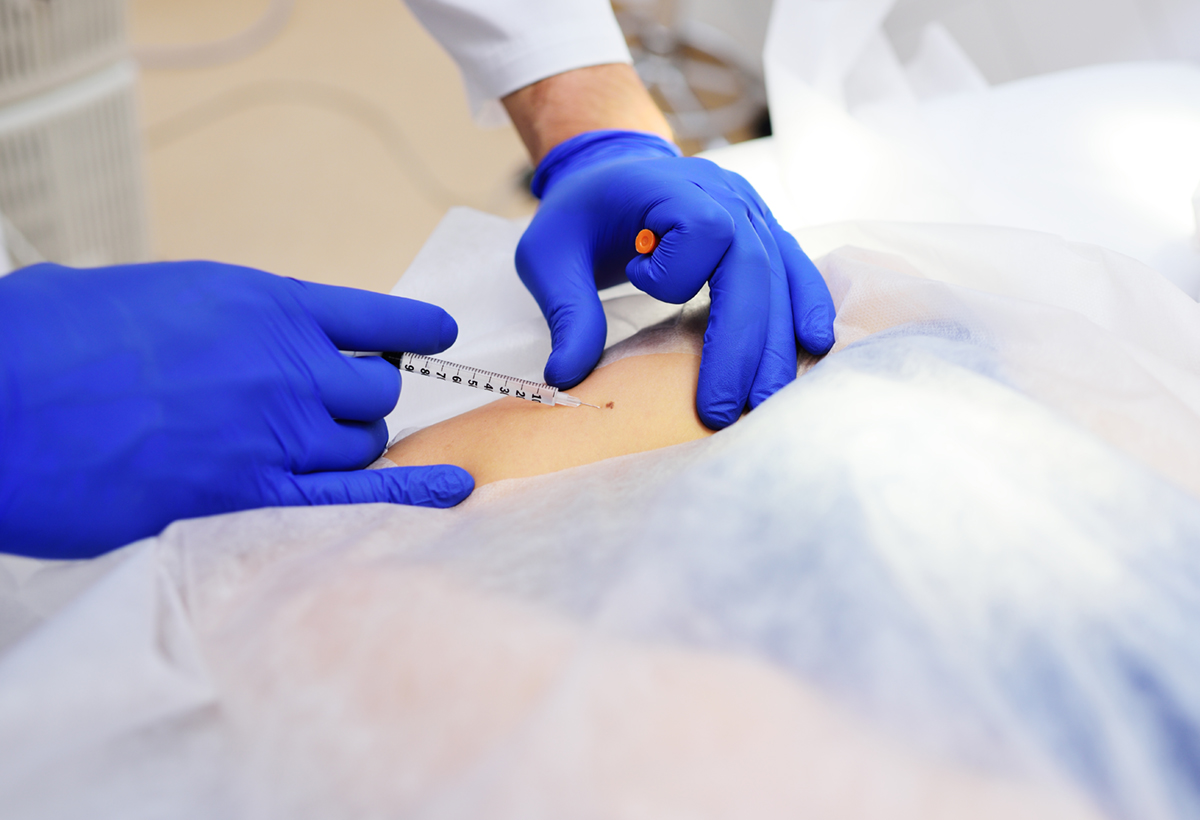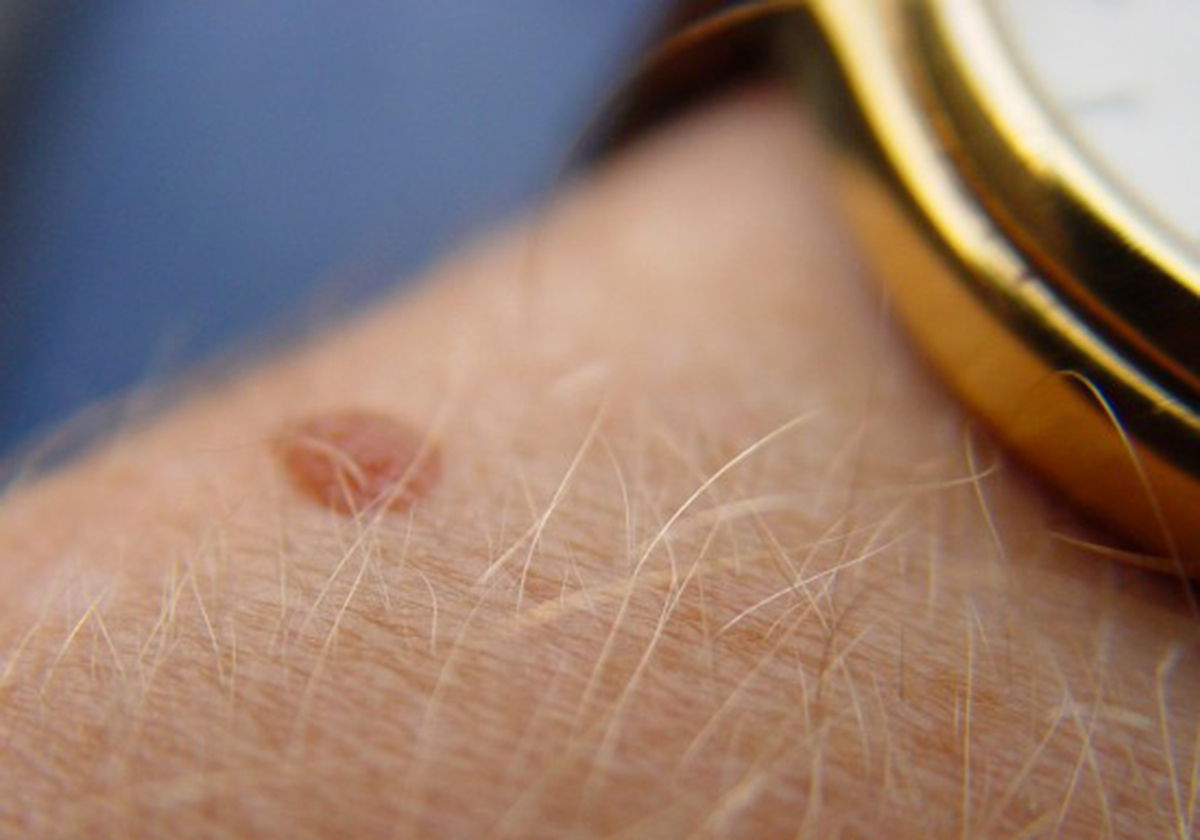Studies have shown that most people have between 10 and 40 moles, although their number varies throughout your life as there are moles you're born with and moles you acquire later on. The great majority of moles are harmless, but in rare cases, they may become cancerous. That’s why monitoring the moles you know you have and watching out for new ones is an important step in the diagnosis of skin cancer, especially malignant melanoma. Although most moles develop by age 20, they can continue to appear until midlife. A mole removal operation is offered as an effective treatment of malignant and suspected-malignant moles.

Signs and symptoms of malignant moles
The typical mole is a plain, brown spot. It is usually less then 1/8 of an inch in diameter. The surface of a mole can be smooth or wrinkled, flat or raised. Sometimes a mole may start out flat and brown and later become slightly raised and lighter in color. Some may become raised enough that they form a small stalk and are eventually rubbed off. Others may simply disappear.
Different types of moles
As we already mentioned, moles come in a wide variety of colors, shapes and sizes. They can be flesh-colored, reddish-brown, medium to dark brown, or blue. Not only that, they can vary in shape from oval to round, and be as small as a pinhead or large enough to cover an entire limb. Moles that are more than 8 inches in diameter and present at birth are a special problem. Not all changes in moles are indicative of cancer. There are certain times in life when moles are more prone to changing. They’re likely to become darker, larger and more numerous because of hormonal changes during adolescence and pregnancy and with the use of birth control pills.
What causes moles to appear?
To understand how the moles appear, we should know some facts about melanin — the natural pigment that gives a color to the skin. This hormone is produced in cells called melanocytes, which are located either in the top layer of the skin or the outer layers of the skin's second layer called the dermis. Melanin is then transported to the surface cells of your skin. These melanocytes are distributed around the whole body but sometimes they form clusters of cells which actually represent moles.
It is still unknown why moles develop or what purpose they serve, if any. The good thing is that most moles are harmless and don't require special care. However, some people have unusual-looking moles, called dysplastic moles, which are more likely to turn cancerous than most other moles. The fact is that sun exposure seems also to play a role in the development of moles and may even play a role in the development of atypical, or dysplastic, moles that are more likely to become malignant.

Risk factors for developing a cancerous mole
Large moles present at birth
The large moles that are present at birth in many people, and which are also called congenital nevi or giant hairy nevi, may increase the risk of malignant melanoma, a very deadly form of skin cancer. In general, moles that are larger than the size of an adult open palm pose the greatest risk, but much smaller moles can become cancerous, too.
Moles that run in families
Moles that are larger than ¼ of an inch or 6 millimeters and irregular in shape are known as atypical nevi and these moles tend to be hereditary. People who have dysplastic nevi have a greater risk of developing malignant melanoma at some point during their lifetimes.
Numerous moles
If a person has many moles larger than a 3-4 millimeters, he or she could be at greater risk of developing melanoma and should consider regularly having these moles monitored.
Mole removal options
Various methods are used to remove moles but most moles do not strictly need any treatment or removal. For cosmetic reasons, a mole can be removed in several ways. We'll have a look at these now.
Shave excision
In this method, the doctor first numbs the area around a mole and then uses a small blade to shave off the mole close to your skin. It is a very effective and quick method that will leave you a little sore, after which the mole is gone forever.
Punch biopsy
Sometimes the doctor may remove a mole with a small incision or punch biopsy technique, which uses a small cookie-cutter-like device.
Excision of the mole
An excision with stitches
The procedure of excising a mole is rather simple. The mole is cut out to its full depth and then the wound is sutured with stitches. This procedure is common for irregular moles that are suspected to be cancerous and moles that are flat and flush with the skin surface. The mole is then sent to a laboratory for a biopsy to determine whether it is cancerous or benign.
An excision with cauterization
During this procedure, the mole is burned away using a cautery tool. The good side of this procedure is that there are no stitches, as the wound is burn-sutured, and will heal naturally.
A laser surgery procedure
During this method, a mole is eliminated using a laser. This is a very good and effective method to remove moles because the laser procedure seals the blood vessels and eliminates the tissue they remove by evaporation. That’s why there is no need for sutures or cutting. In some cases, the scar tissue may be less and less visible by utilizing this method. Although laser has been tried for moles, it is not usually the method of choice for most deep moles because the laser light doesn’t penetrate deeply enough.
The procedure of removal
The whole procedure of removing the moles usually takes less than an hour. It is a simple procedure and most often, the patient only requires local anesthetic to have the mole removed. In some cases, light to heavy sedation is also required to help the patient relax. There should be very little or no pain during any of the procedures themselves. After local anesthetic has been absorbed, the area may be tender and red. After the procedures not involving sutures, a scab will form on the surface where the mole was and it should fall off in one to two weeks. After any of the procedures, the area may be covered with a bandage. All moles that are removed, even benign-looking ones, should be sent to pathology for microscopic examination. This examination helps the doctors determine whether the mole is harmless or malignant.
Prognosis of mole removal operations
Scarring
Fortunately, in all these procedures, the scarring is usually minimal, depending on the type of removal surgery used. Ranging from a small, white line if sutures were used to a white oval where the mole once was. It is important to know that a person can minimize the scar darkening by using sunscreen with a Sun Protection Factor of 15 or more.
Re-growth of the moles
The moles usually do not re-grow once they are removed. However, whenever a mole is removed there are some mole cells left remaining in the skin.
Risks of mole removal operation
There are several risks of mole removal operation and they can vary from infection to anesthetic allergy and nerve damage.
One of the most common difficulties after mole removal is a scar. Many people will attempt to remove moles for cosmetic reasons, not realizing that each and every removal may result in a scar.
The Typical Costs Associated With Mole Removal
The costs for mole removal vary depending on the method used. Fees typically range from $125 to $150. These fees do not include anesthesia, operating room facility, hospital stay and other related expenses. That’s why, when viewing the costs for mole removal, you should make sure the total figure includes all the associated costs.
Self care and prevention
Avoid peak sun times
It's best to avoid overexposure to the sun
Use sunscreen
Twenty to 30 minutes before going outdoors, apply sunscreen with a sun protection factor (SPF) of at least 15.
Cover up
Hats, long sleeves and other protective clothing should be very helpful in avoiding damaging by UV rays.
Read More: Protect Your Skin - National Healthy Skin Month
Post-operative tips
- After the removal, keep the wounded area raised above the level of your heart, if possible to reduce the bleeding, ease the pain and swelling and promote healing.
- Keep the wound and bandage clean and dry for 24 hours.
- If the bandage gets wet, unwrap it slowly and carefully.
- Clean the wound gently 2 to 3 times a day with a cotton swab dipped in a mixture of water and hydrogen peroxide (1:1).
- Do not go swimming or soak the wound.
Self-examination of moles
Since early detection and removal are the best way to cure melanoma, self-examination turns out to be very important. You should remember to check the areas that aren't exposed to sunlight, including scalp, armpits, and feet (the soles and between the toes), genital area, the skin underneath your breasts etc. Signs of concern include a mole's:
- recent change in appearance
- size
- shape
- color
- irregularity in color
- loss of a uniform border
- asymmetry
- bleeding
- notching of a border
- www.mayoclinic.com/health/mole-removal/AN01780
- en.wikipedia.org/wiki/Mole_removal
- www.health.learninginfo.org
- Photo courtesy of Scott Robinson by Flickr : www.flickr.com/photos/clearlyambiguous/47558324/

